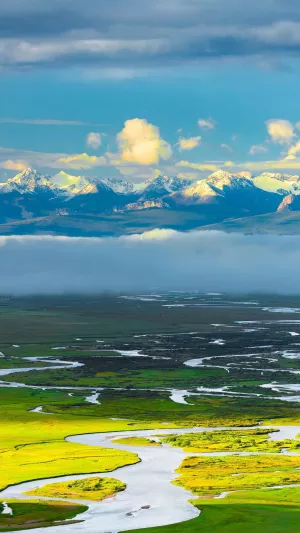Rivers fall under the category of "surface runoff", which refers to the water flowing along the surface of the land regularly or intermittently within a certain area.
As surface runoff, rivers participate in the water cycle. River water is also constantly renewed with the water cycle. In the early period of human society, water from rivers and lakes is the most accessible water resource for human beings, so providing a "water source" for human society is a basic function of rivers.
The second development direction of rivers is to use rivers for shipping. Especially in ancient times, using water's natural buoyancy for shipping was the most efficient mode of transportation. The rivers that can be navigated are equivalent to the "highways" of ancient times, which serve a very important transportation function.
Rivers are an important part of the water cycle on Earth. It plays an important role in the transmission and transportation of matter and energy around the world. Water also continuously changes the surface morphology, forming different water features, such as gullies, deep canyons, alluvial fans, alluvial plains, and estuarine deltas.
In addition, in areas where rivers are dense, the open water usually regulates the climate to some extent. Although flooding also brings loss of life and property to human beings and damage to the ecological environment but compared with the benefits it brings to human beings, it is still negligible.
On the map, we can see that most rivers are curved in shape. Why are rivers curved instead of straight?
First, the terrain is a big factor. A river may pass through many areas, from the plain to the mountains, or from the plateau mountains to the plain, etc. The river does not flow smoothly all the way. When a river encounters various obstacles, if the obstacles are easy to break, the current will push it open and continue on.
If an obstacle is very strong, such as a boulder, the water can only move around it. Over time the straight course of the river becomes curved.
But even in the wide plains, the river is always winding. Because the soil on both sides of the river cannot contain exactly the same chemical composition and quantity, this changes the ability of the soil on both sides to withstand the impact of the water to varying degrees.
The second is caused by the Earth's rotation. As we all know, as the Earth rotates from west to east, rivers are attracted by the Earth's gravity and the eccentric force of its rotation. The water will flow lower, so the river will bend.
Rivers also bend because the water flows at different speeds on either side. The flow of the river is faster on one side and slower on the other. The faster-moving side of the river also has a greater impact. The soil is easier to collapse, and when the bank collapses, the river bends. In addition, disturbance of organisms in the riverbank, cracks in the stratum, and so on can make the flow bend.
Thus, after thousands of years of scouring, numerous repetitions and cycles, and increasing sediment deposits due to the slow flow of water along the projecting bank, the zigzag river is formed.





